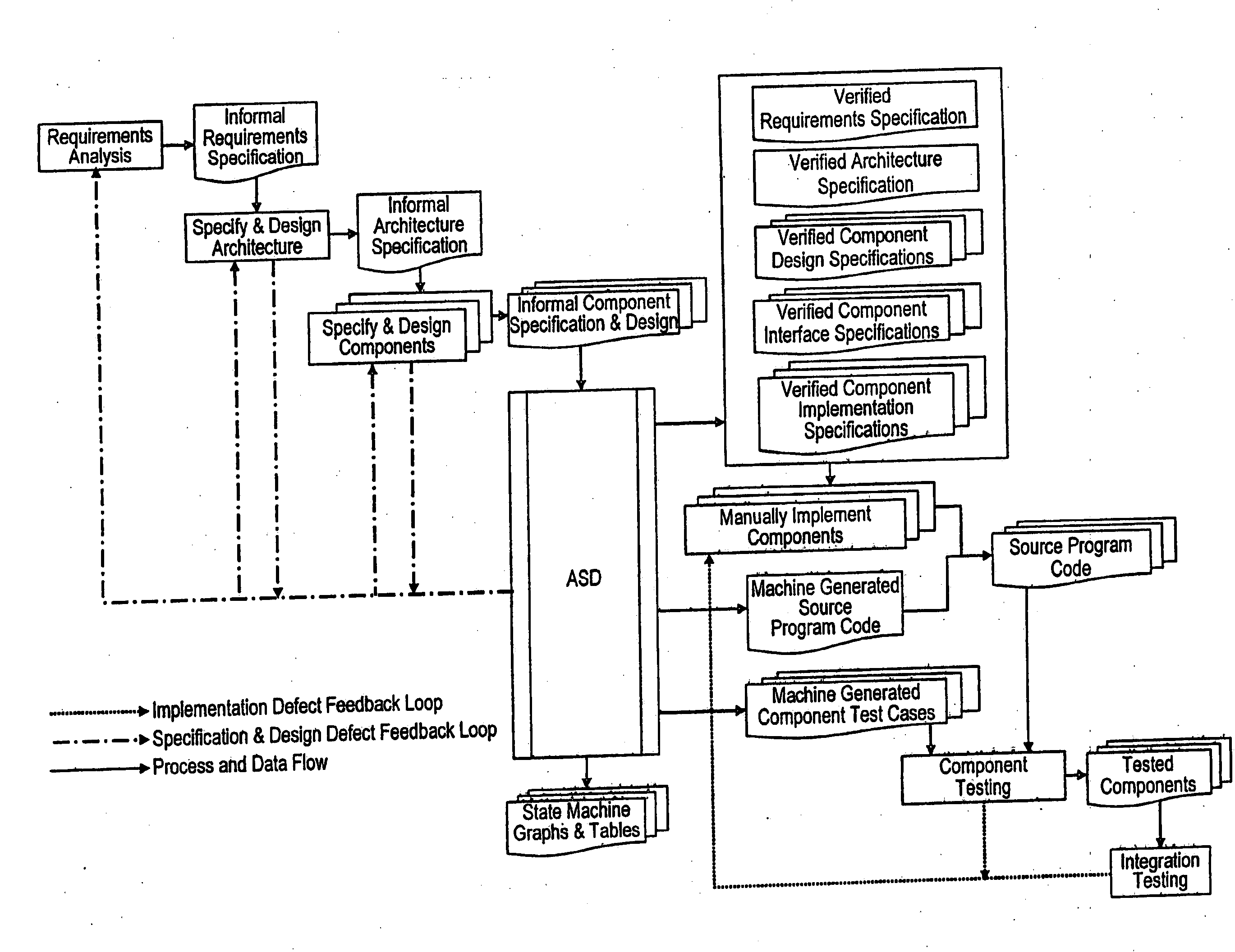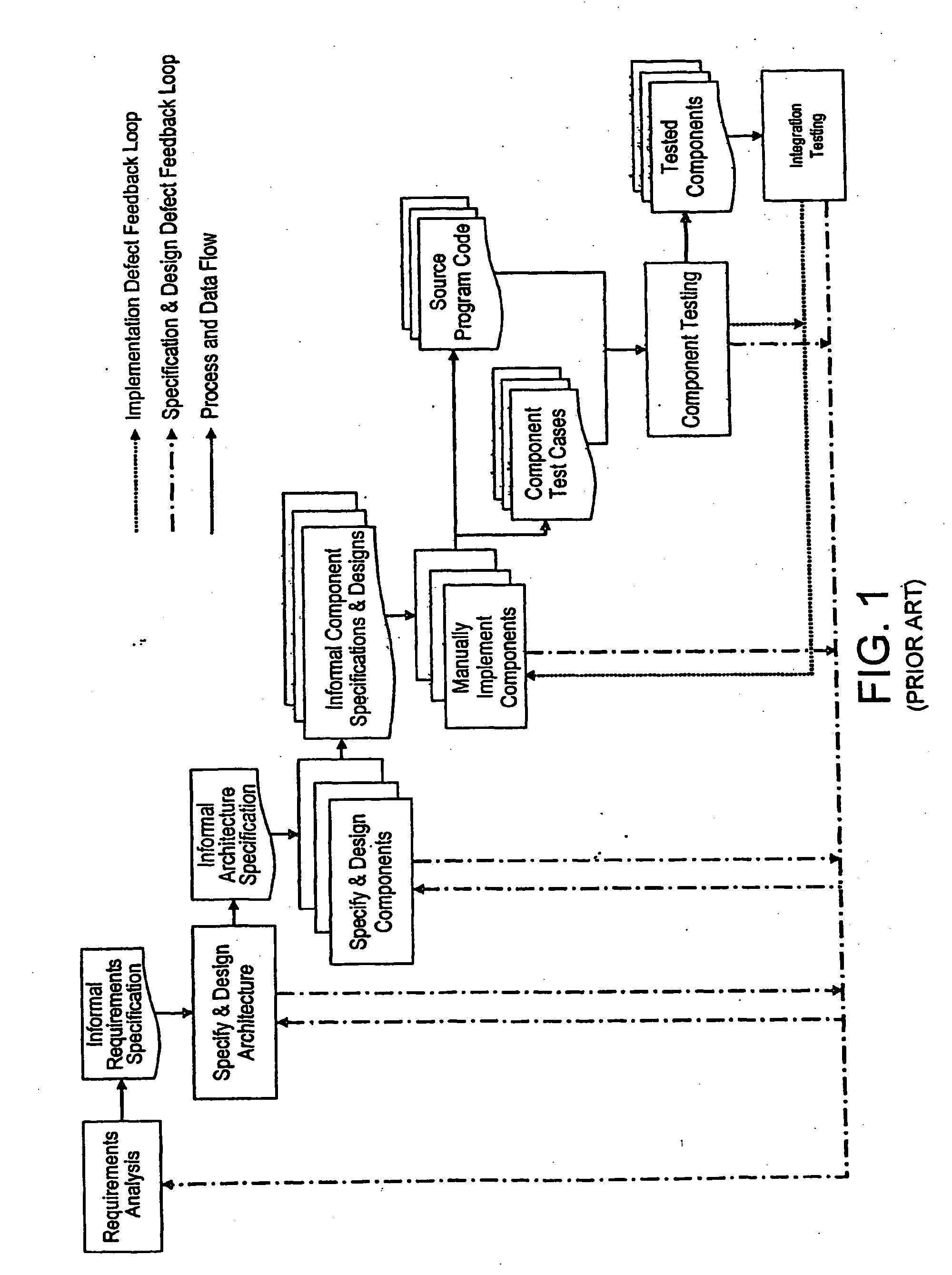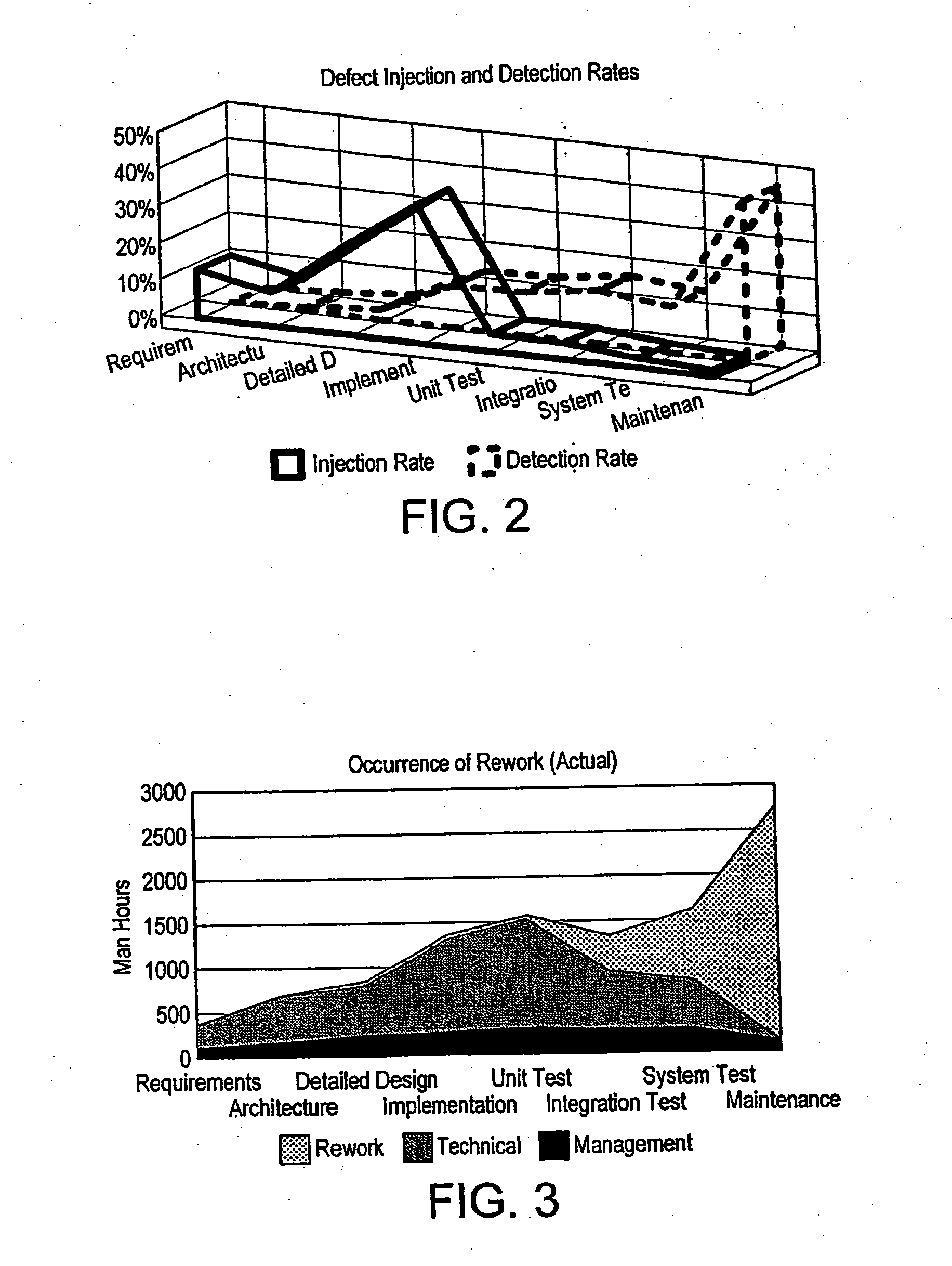Analytical Software Design System
a software design and software technology, applied in the field of analytical software design systems, to achieve the effect of reducing defects, increasing the effectiveness and coverage of component testing
- Summary
- Abstract
- Description
- Claims
- Application Information
AI Technical Summary
Benefits of technology
Problems solved by technology
Method used
Image
Examples
first embodiment
[0143]The Model Generator 106 implements the generic algorithms presented below and automatically generates the necessary mathematical models in a suitable notation. One such mathematical notation is the existing process algebra CSP [Hoa85, Ros98], which is used in the present first embodiment of the present invention.
[0144]The Model Generator 106 forms an important inventive part the ASD System 62 by enabling the output from the sequence-based specification and box structure development described above, to be translated directly into the Mathematical Models 108 needed for subsequent design verification steps. The algorithms used in this translation have been proven mathematically by the present inventor to produce mathematical models 108 that describe exactly the same behaviour as the Sequence-Based Specifications and Component Implementation Specifications from which they are translated. It is this unique link between existing formal techniques and theories that enables them to be...
case 1 (
state(p)=(Res≈Ø)[0182]The process Q (s, r, cj, (y1, . . . , yk)) is defined in terms of the following two cases:[0183]Case 1 (Predicates): The stimulus s is defined in terms of a predicate and therefore takes the form s=s′:p. The resulting CSP process captures the predicate as a guard state (p), defined in terms of the state variables, over the standard sequence of the stimulus s′ event followed by the response r event and leading to the process Pci.[0184]Case 2 (No predicates): The stimulus s does not involve predicates and therefore results in the standard CSP definition as defined in Algorithm 1.[0185]4. The CSP process PBS is then defined as follows:
PBB=Pc0(I1, . . . , Ik) where c0 represents the shortest canonical sequence ⋄ and I1, . . . , Ik are the initial values of each state variable respectively. These initial values are derived directly from the definitions of the specification functions.
Algorithm 3: Translating Under-Specified Black Boxes into CSP
[0186]Predicate functio...
case 1 (defined predicates) : the stimulus s is an abstract stimulus of the form s = s ′ : p , where s ′ is some stimulus in s and p is a defined predicate (i.e.p∈u).the resulting csp process is defined according to step 3 (case 1)
Q(s,r,cj,(y1,…,yk))=state(p)&s′→r→Pcj(y1,…yk)ifs=s′:p,forsomes′∈Sandpredicatep∉U,s′→r→Pcjifs=s′:p,forsomes′∈Sandpredicatep∈U,s→r→Pcj(y1,…,yk)otherwise. where the function state (p) represents the predicate p in terms of the corresponding state variables (as defined in Step 3 of Algorithm 2).[0193]The process Q (s, r, cj, (y1, . . . , yk)) is defined in terms of the following three cases:[0194]Case 1 (Defined predicates): The stimulus s is an abstract stimulus of the form s=s′:p, where s′ is some stimulus in S and p is a defined predicate (i.e. p∉U). The resulting CSP process is defined according to Step 3 (Case 1) of Algorithm 2.[0195]Case 2 (Undefined predicates): The stimulus s is an abstract stimulus of the form s=s′:p, where s′ is some stimulus in S and p is an undefined predicate (i.e. p∈U). The resulting CSP process captures this undefined element by ignoring it (as opposed to constructing a guard) and simply extracting the stimulus s′ as the initial event offered followed...
PUM
 Login to View More
Login to View More Abstract
Description
Claims
Application Information
 Login to View More
Login to View More - R&D
- Intellectual Property
- Life Sciences
- Materials
- Tech Scout
- Unparalleled Data Quality
- Higher Quality Content
- 60% Fewer Hallucinations
Browse by: Latest US Patents, China's latest patents, Technical Efficacy Thesaurus, Application Domain, Technology Topic, Popular Technical Reports.
© 2025 PatSnap. All rights reserved.Legal|Privacy policy|Modern Slavery Act Transparency Statement|Sitemap|About US| Contact US: help@patsnap.com



